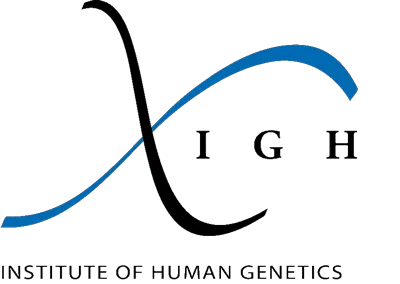XomeTox - evaluating multi-omics integration for assessing rodent thyroid toxicity.
Integrating Multiple Molecular-level Data Streams to understand (a) range of normal adaptation vs pathology and (b) molecular generated gene expression changes and persistence over time.
CEFIC website providing information about the project can be found here.
Project partners


Omics data in chemical risk assessment
The advent of omics experiments fueled significant hopes in regulatory toxicity to generate comprehensive toxicologically relevant information on molecular levels more quickly, more precise, with less resources, and much cheaper than ever before. This explicitly includes the reduction of live animal testing summarized by the 3 R's approach. Although single-omics techniques are essential tools to measure molecular responses in an untargeted manner, they are restricted to one molecular level only, limiting the ability of detecting whole pathway repsonses to a toxicant.
Objectives
We are convinced that a substantial improvement in detecting and quantifying perturbations of pathways caused by chemicals can be achieved by using multi-omics data in a dose- and time-resolved experiment design.
The intention is to develop methods and best practices for an integration of multi-omics data that can be used in regulatory toxicology and chemical risk assessment. Furthermore, a standardized framework for the generation, integration, and evaluation of multi-omics data in risk assessment should foster the acceptance of these techniques among regulators. The main focus thereby, however, lies on reproducibility (intra- and inter-laboratory), the quantification of the magnitude of an omics response, and how the findings can be linked to apical endpoints, i.e., how to transfer the molecular results of omics studies to an individual or population level.
Main Objectives
- Evaluate various published and in house developed integrative analysis approaches for multi-omics data, in particular making use of an approach we have recently developed to integrate proteomics and transcriptomics data which combines network inference and comparative genomics
- Identify criteria for an optimal design of a multi-omics toxicity study
- Detect toxicant-triggered re-wiring of regulatory networks and changes of master-regulators, including non-coding RNAs, that link to adverse-outcomes.
- Evaluate whether time- and concentration-resolved multi-omics data enable the prediction of adversity.
- Evaluate whether a deep machine learning approach may assist in discriminating adaptive versus adverse perturbations of regulatory networks.
- Assess whether such integrative analyses enable discriminating toxicant-induced versus disease-caused, secondary perturbations.
- Determine to what extent individual omics experiments contribute to the predictive power of such an approach.
Project Outline
XomeTox is composed of five work packages.
- WP1 focuses on evaluating multi omics analysis for toxicological questions using available data. From that we will derive principles and standards that will guide the work in XomeTox.
- In WP2 a rat oral toxicity study will be conducted that focuses on direct and indirect thyroid toxicity.
- WP3 comprises a series of various omics experiments and the associated single omics data analysis.
- WP4 several orthogonal approaches for integrative data analysis are performed.
- WP5 collects best practices established throughout the other work packages and evaluates multi omics strategies for regulatory application.
A list summarizing the multi-omics datasets that were utilized in WP1 for evaluating data integration methods is presented here.
Publications
Articles
- Canzler, S., Hackermüller, J., (2020):
multiGSEA: a GSEA-based pathway enrichment analysis for mult-omics data
BMC Bioinformatics 21, art. 561
- Canzler, S., Schor, J., Busch, W., Schubert, K., Rolle-Kampczyk, U.E., Seitz, H., Kamp, H., von Bergen, M., Buesen, R., Hackermüller, J., (2020):
Prospects and challenges of multi‑omics data integration in toxicology
Arch. Toxicol. 94 (2), 371 - 388
Software
Authors
Sebastian Canzler, Jörg Hackermüller
Summary
Gaining biological insights into molecular responses to treatments or diseases from omics data can be accomplished by gene set or pathway enrichment methods. A plethora of different tools and algorithms have been developed so far. Among those, the gene set enrichment analysis (GSEA) proved to control both type I and II errors well.
In recent years the call for a combined analysis of multiple omics layer became prominent, giving rise to a few multi-omics enrichment tools. Each of which has its own drawbacks and restrictions regarding its universal application.
Here, we present the multiGSEA package aiding to calculate a combined GSEA-based pathway enrichment on multiple omics layer. The package queries 8 different pathway databases and relies on the robust GSEA algorithm for a single-omics enrichment analysis. In a final step, those scores will be combined to create a robust composite multi-omics pathway enrichment measure. multiGSEA supports 11 different organisms and includes a comprehensive mapping of transcripts, proteins, and metabolite IDs.
Important links
| Software download | https://github.com/yigbt/multiGSEA |
| Documentation | http://bioconductor.org/packages/release/bioc/vignettes/multiGSEA/inst/doc/multiGSEA.html |
| Bioconductor devel package | https://bioconductor.org/packages/devel/bioc/html/multiGSEA.html |
| Citation | Sebastian Canzler, Jörg Hackermüller. multiGSEA: A GSEA-based pathway enrichment analysis for multi-omics data. BMC Bioinformatics 21, 561 (2020). https://doi.org/10.1186/s12859-020-03910-x |
Authors
Sebastian Canzler, Jörg Hackermüller, Jana Schor
Summary
It is a highly tedious task to collect omics data sets from different molecular levels such as transcriptome, proteome, and metabolome, to be used in a multi-omics data analysis. This is mainly because of a large amount of potential databases to search in, their non-unified querying system which results in a fairly large amount of manual work.
To surmount these obstacles, we developed the Multi-Omics Data set Finder (MOD-Finder) as part of the CEFIC LRI-C5 XomeTox project, an R Shiny application, to efficiently search for compound-related omics data sets in an automated manner. Therefore, several publicly available databases are automatically queried for data sets with relation to a user specified compound or toxicant. The results are presented in a plain datatable. Additionally, compound-related information such as distinct IDs, synonyms, description, as well as visualizations regarding chemical-gene interactions or KEGG pathway enrichments are provided. The MOD-Finder application works as an easy-to-use webservice.
Important Links
| Webservice | https://web.app.ufz.de/mod_finder |
| Source code | https://github.com/yigbt/MOD-Finder |
| Citation |
S. Canzler, J. Hackermüller, J. Schor (2019): MOD-Finder: Identify multi-omics data sets related to defined chemical exposure; arxiv.org (preprint); https://doi.org/10.48550/arXiv.1907.06346 |
